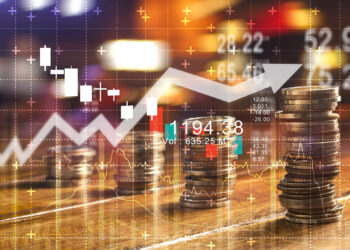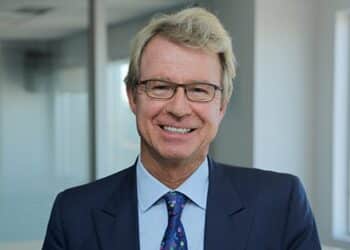Following growth of 26 per cent in the first half, gold’s future trajectory will largely be shaped by trade tensions, inflation dynamics and monetary policy, the Gold Council said in its mid-year outlook.
While some of the drivers behind its exceptional growth – such as a weaker US dollar, persistent geopolitical risk, robust investor demand and continued central bank purchases – are expected to persist, the council said “consensus expectations suggest a relatively steady finish for gold”.
Looking back at the first half, the council highlighted the shiny metal’s many wins, including 26 new all-time highs in H1 2025, following 40 such events in 2024.
Investor demand also boosted gold exchange-traded funds (ETF), which added 41 per cent to US$383 billion by the end of the first half.
“Trade-related and other geopolitical risks played a large role, not just directly, but by fuelling moves in the dollar, interest rates and broader market volatility – all of which fed into gold’s appeal as a safe haven,” the council said.
The second half, however, sits on a seesaw – with the council tempering expectations for the asset’s growth for the remainder of the year.
“Inflation data have shown signs of improvement, but concerns remain that conditions could deteriorate quickly,” it said.
“Dollar-related pressures are likely to persist and questions around the end of US exceptionalism may dominate investor discussions.”
While these conditions, overall, position gold as a net beneficiary, gold’s price has already captured part of these dynamics, it said, adding that sustainable conflict resolution and continued rising stock prices could lure more risk-on flows and limit gold’s appeal.
“Our analysis, based on our gold valuation framework, suggests that, under current consensus expectations for key macro variables, gold could remain rangebound in H2, closing roughly 0 per cent–5 per cent higher than current levels, equivalent to a 25 per cent–30 per cent annual return,” the council said.
“Technical indicators suggest that gold’s consolidation phase over the past few months is a healthy pause in a broader uptrend, helping to ease previous overbought conditions and potentially setting the stage for renewed upside.”
The council added that falling interest rates and continued uncertainty would maintain investor appetite, particularly via gold ETFs and OTC transactions, while also tipping for central bank demand to remain robust.
The council also outlined bull and base case scenarios, projecting gold to end the year either 40 per cent higher or with low double-digit gains.
Under the bull case, economic and/or financial conditions would deteriorate pushing gold up 10 to 15 per cent in the second half.
“As we have seen historically during periods of heightened risk, investment demand would significantly outweigh any deceleration in consumer demand and rise in recycling,” it said.
Under the bear case, sustainable geopolitical and geoeconomic conflict resolution would reduce the need to keep hedges, instigating a retreat of 12 to 17 per cent over the half.
The council added that rising yields and a stronger dollar could drive gold ETF outflows and soften investment demand, though lower prices may attract price-sensitive buyers and limit downside risk, with US$3,000/oz seen as a key support level.
Ultimately, the council said: “Given the intrinsic limitations of forecasting the global economy, we believe that gold – through its fundamentals – remains well positioned to support tactical and strategic investment decisions in the current macro landscape.”






